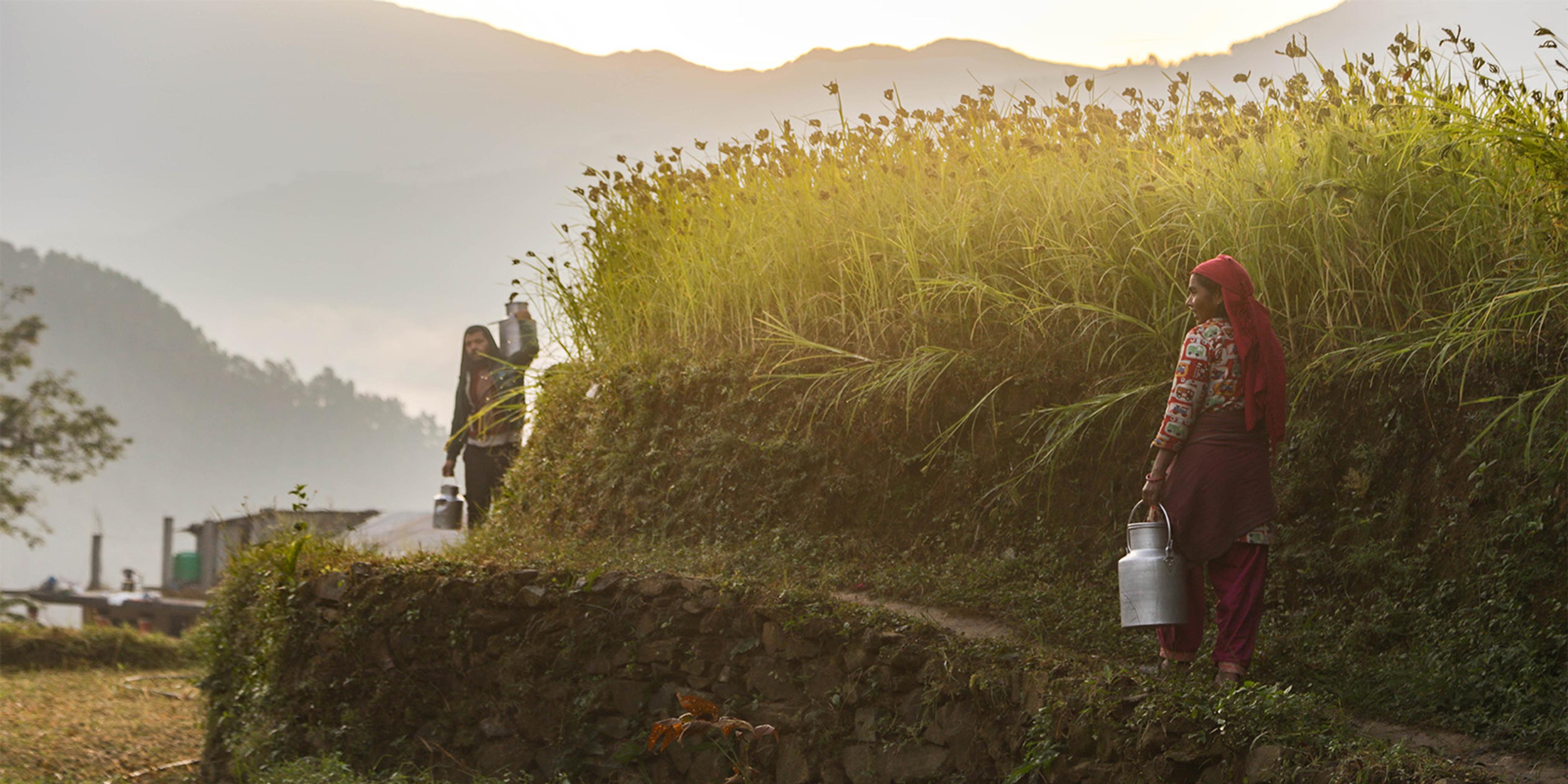
Rooted
Lending a Cooperative Hand in Nepal
Organic Valley takes a cooperative mindset to all that we do to support a healthier, more sustainable food system. A recent trip across the ocean allowed us to advance this mission.
Eleven Organic Valley team members traveled to Nepal to help install solar panels and batteries at a 500-member dairy cooperative that was facing regular power outages. Milk spoils without power to cool it. The new system is designed to prevent this.
Organic Valley started as aco-op withseven founding members and has grown to nearly 1,800 farmer-members. Having reliable power is expected to allow the Binjel Milk Producers Co-op in Nepal to double its membership to nearly 1,000 members!

A farmer pours fresh milk into a barrel.
GRID Alternatives coordinated the install, and Organic Valley facilities manager Maggie Becker was among those to make the 7,500-mile trip to help. Here are her recollections of the journey, along with photos from Clovis Siemon, Organic Valley team member.
I signed up to volunteer with GRID Alternatives because I have a deep interest in the sustainable development of all systems, but especially business systems. Throughout my career as facilities manager, I have been part of multiple solar planning projects, but had never been a part of the installation.
I was delighted to travel to Nepal but nervous to be away from my family and to travel with co-workers I barely knew. The trip was like a dream and I came home with a deeper connection to Organic Valley’s mission, a greater sense of purpose, and an unbreakable bond with the co-workers who went on this adventure with me.
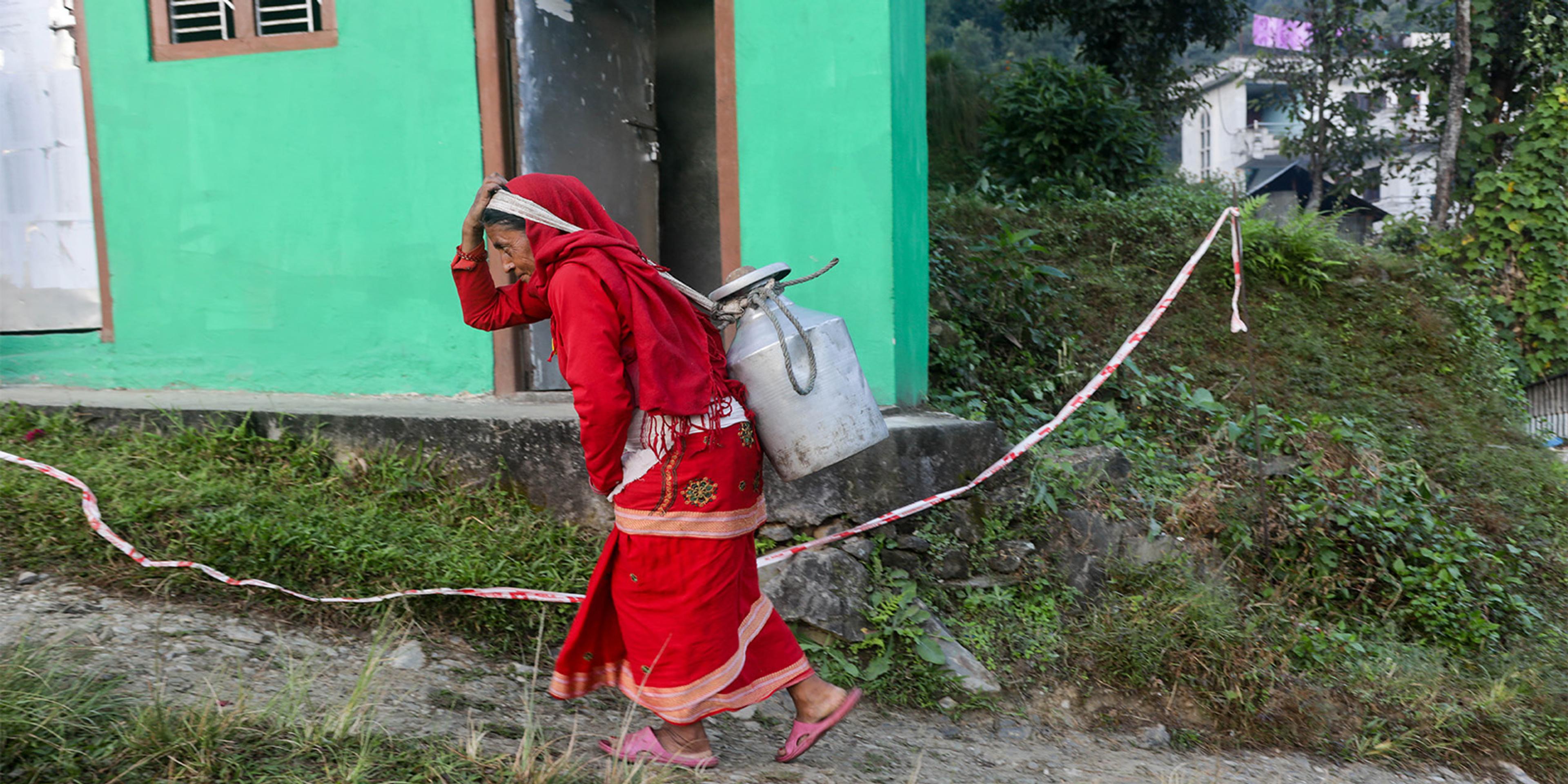
A woman carries a barrel of milk.
We arrived in Binjel, Nepal, on Nov. 1. The drive took us out of Kathmandu on a small bus, and leaving the city felt like a sigh of relief. The traffic was like nothing I have experienced. There are no stop lights, or even really stop signs. The vehicles just take turns going where they need to go. It was chaotic and loud, but notably, the drivers seemed very calm and accepting of one another.
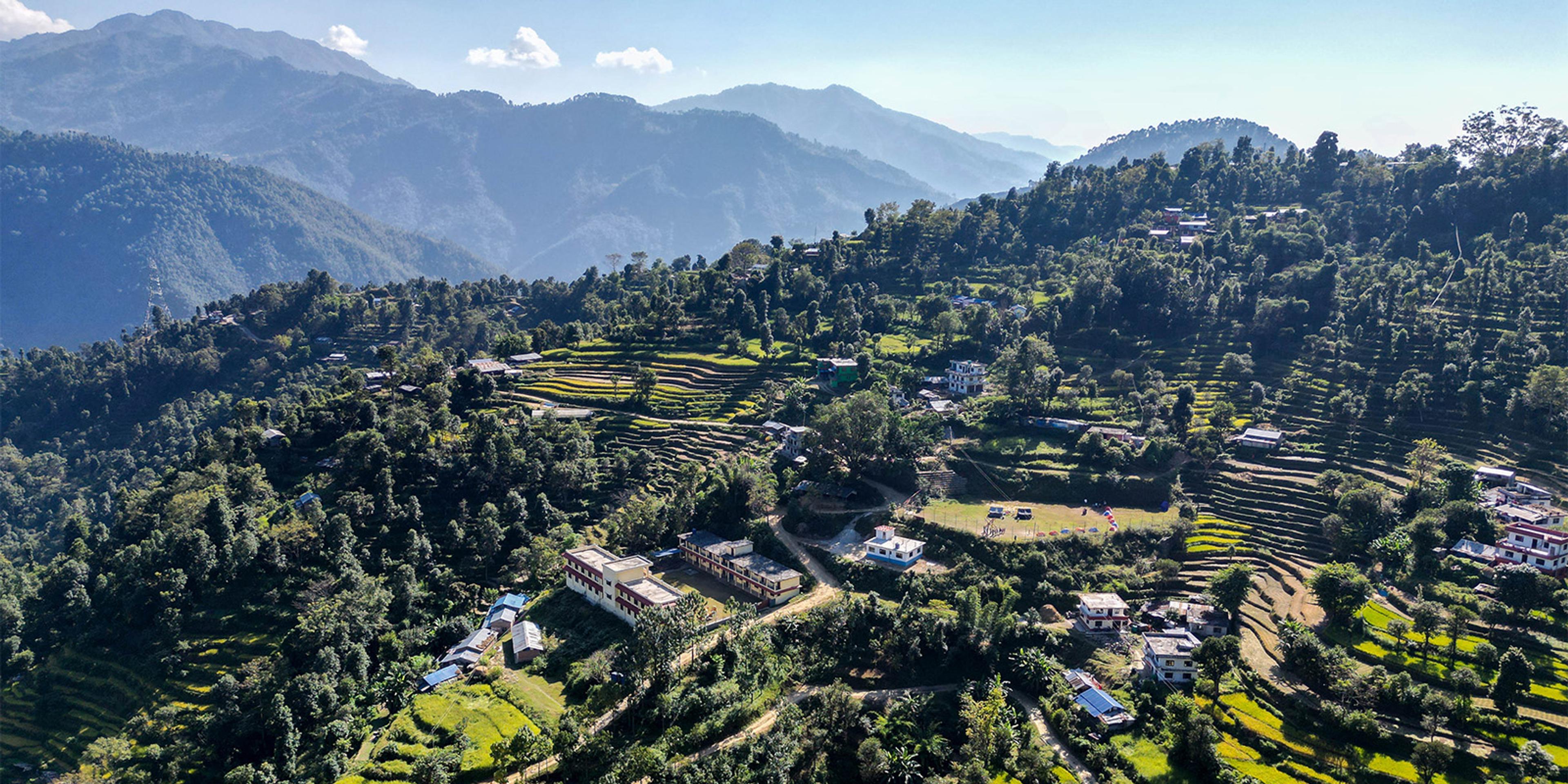
Binjel, Nepal
Arriving in Binjel
I was glad I didn’t have to drive, but it did feel more comfortable leaving the city behind. As the city faded behind us, the scenery changed—waterfalls fell into the road, trickled across, and dropped hundreds of feet on the other side, snow-capped peaks presented in the distance, and eventually farms emerged on the landscape.
We were starting to feel at home, except these farms lacked so many of the comforts we would expect at home. The structures that housed the animals could hardly be considered barns. Many of the houses didn’t have doors. Children ran around barefoot—OK, that part was the same! We could see the farms had electricity by the presence of overhead power lines. I wondered about the grid and how often they were without electricity, and how that impacted their day-to-day operations both as a farm and as a community.
There was a full-blown celebration waiting for our arrival. A band played and when we walked to the dairy cooperative locals adorned us with leis of marigolds. Marigolds are an important part of the Nepali culture and represent the sun, symbolizing brightness and positive energy.
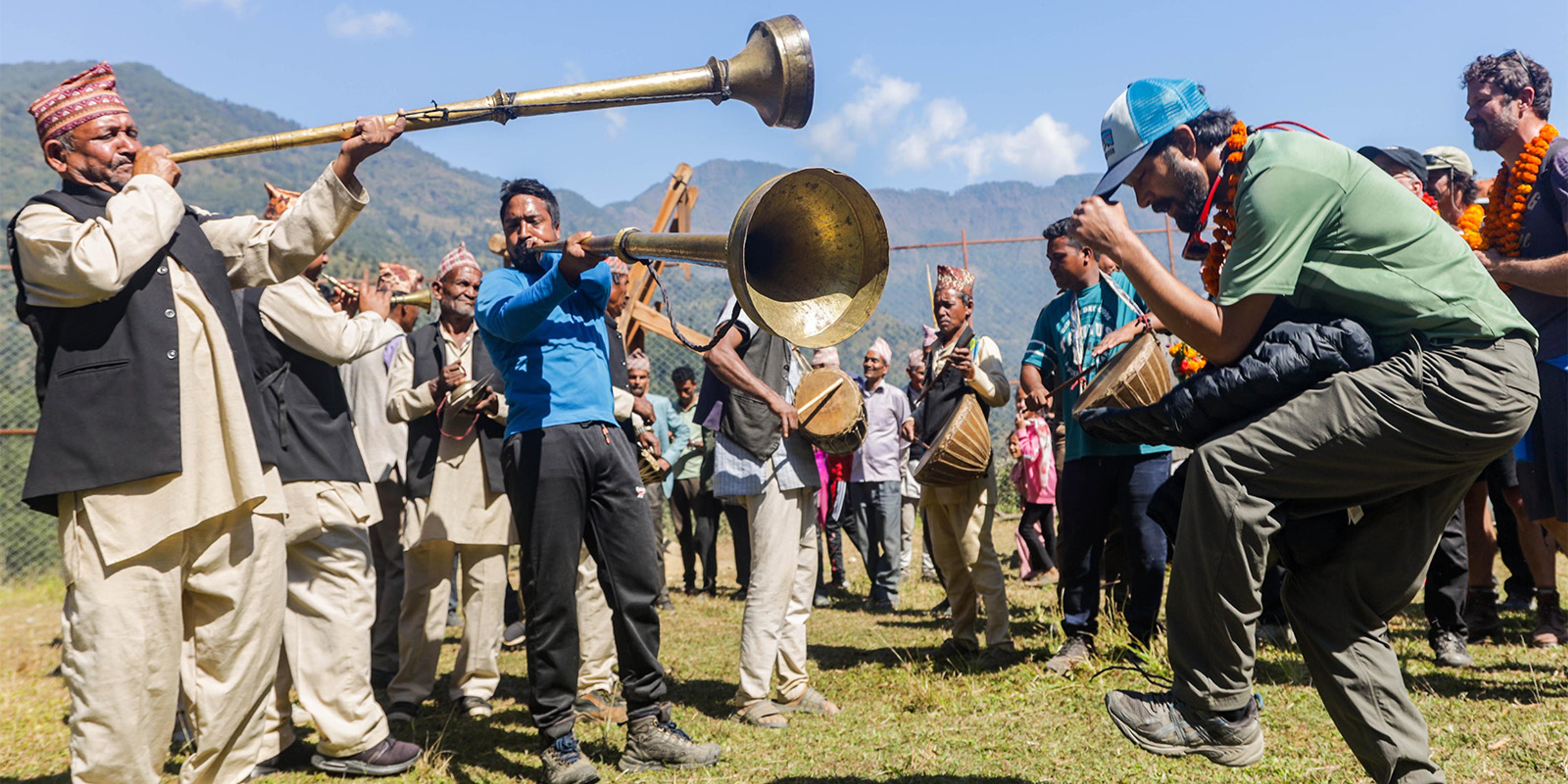
Residents celebrate with Organic Valley employees.
The positive energy flowed through music and dance as we made our way to the place we’d call home for the next three nights.
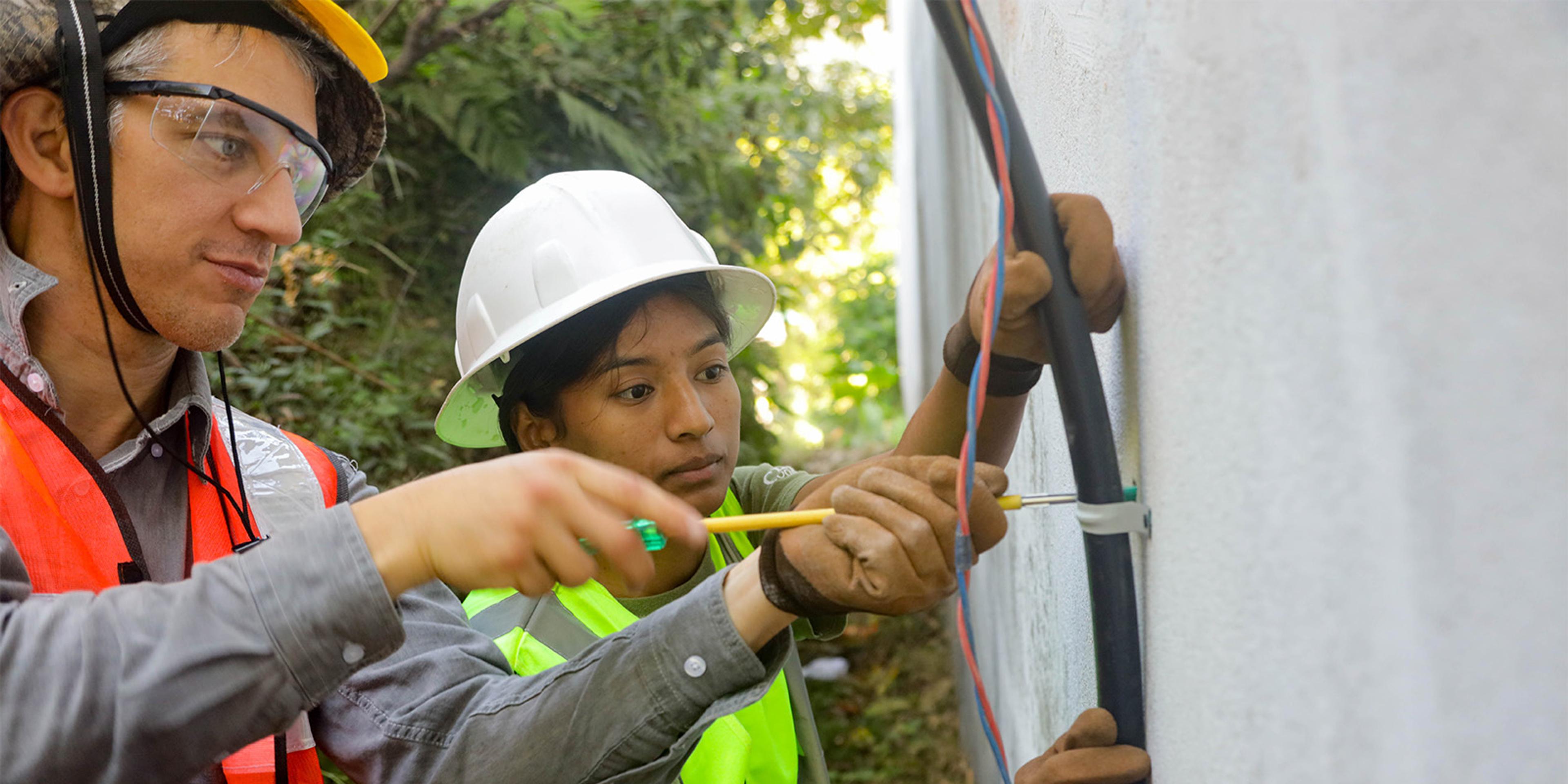
Work continues on the solar installation.
Starting the Solar Install
The next day was our first full day of work. We met our crew, led by Nikita, the electrical engineer, and helped with every step of the install. We interacted with the co-op farmers and employees and witnessed the morning milk delivery, which was done on foot on trails carved along the terraces. A manager measured the butterfat in the milk and said, through a translator, that the farmers were paid based on the butterfat percentage. Our group shared the similarities of our processes and the way farmers in the U.S. care for the land.
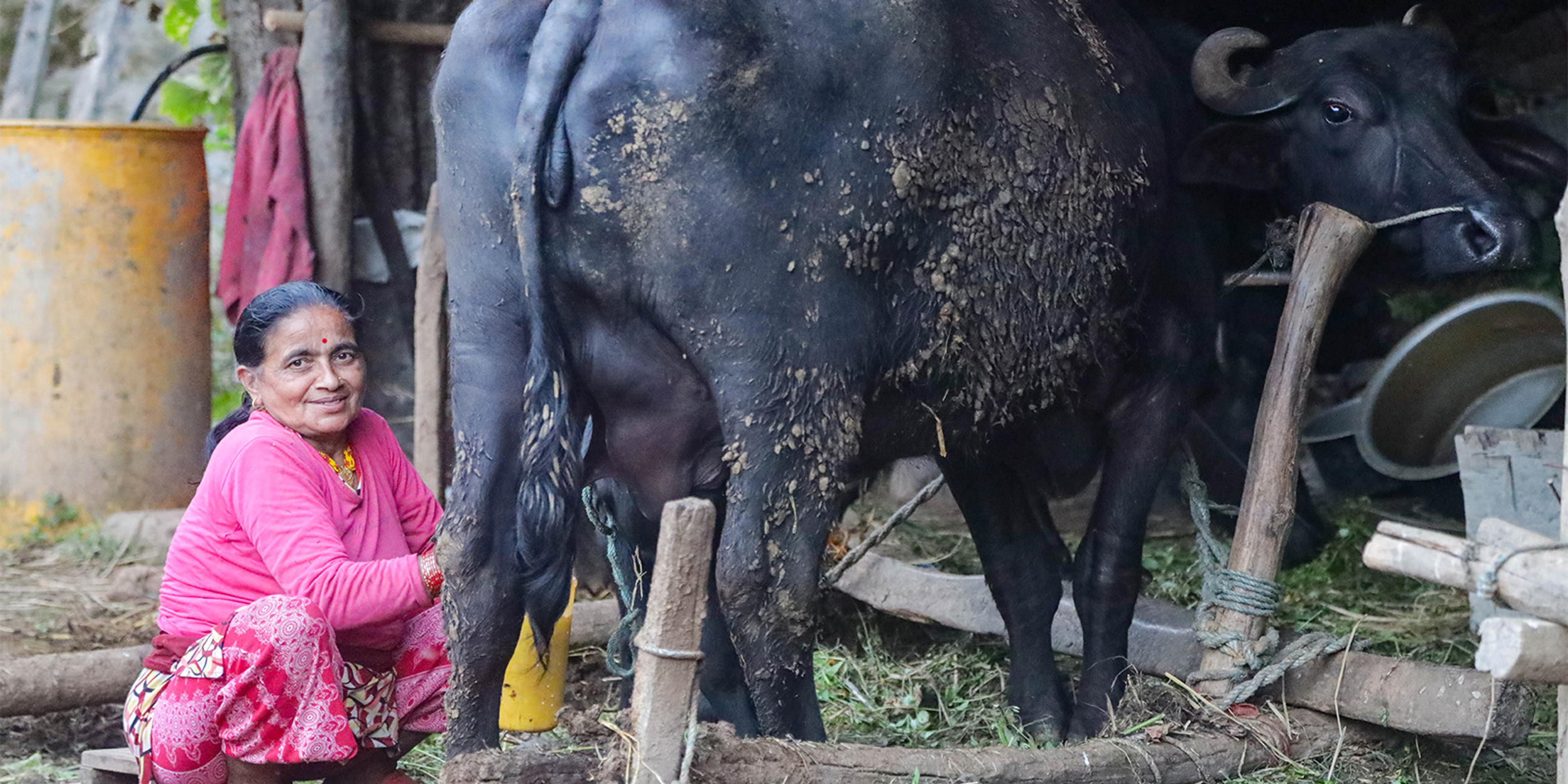
A woman milks a water buffalo in Nepal.
Over the next few days we got to know the farmers. Their farms, nestled into the foothills of the Himalayas, had one to two milk cows each. Most had expansive gardens, a few goats, chickens and some had a water buffalo. They grew rice in the rice patties which they dug by hand into the side of the hills.
The bright green building where we installed the panels was on land donated by one of the local farmers. It was nestled into the terraced hills along with all the farms. The men and women carrying the milk had varying distances to carry it along narrow dirt paths, but more notably, they had varying levels of elevation to climb in the process.
The link can be made between the installation of solar panels and the resiliency of these farmers’ livelihoods. Like us, they are trying to figure out what it takes for farmers to be able to afford to farm well. And like us, they are a community that supports good farming and land use.
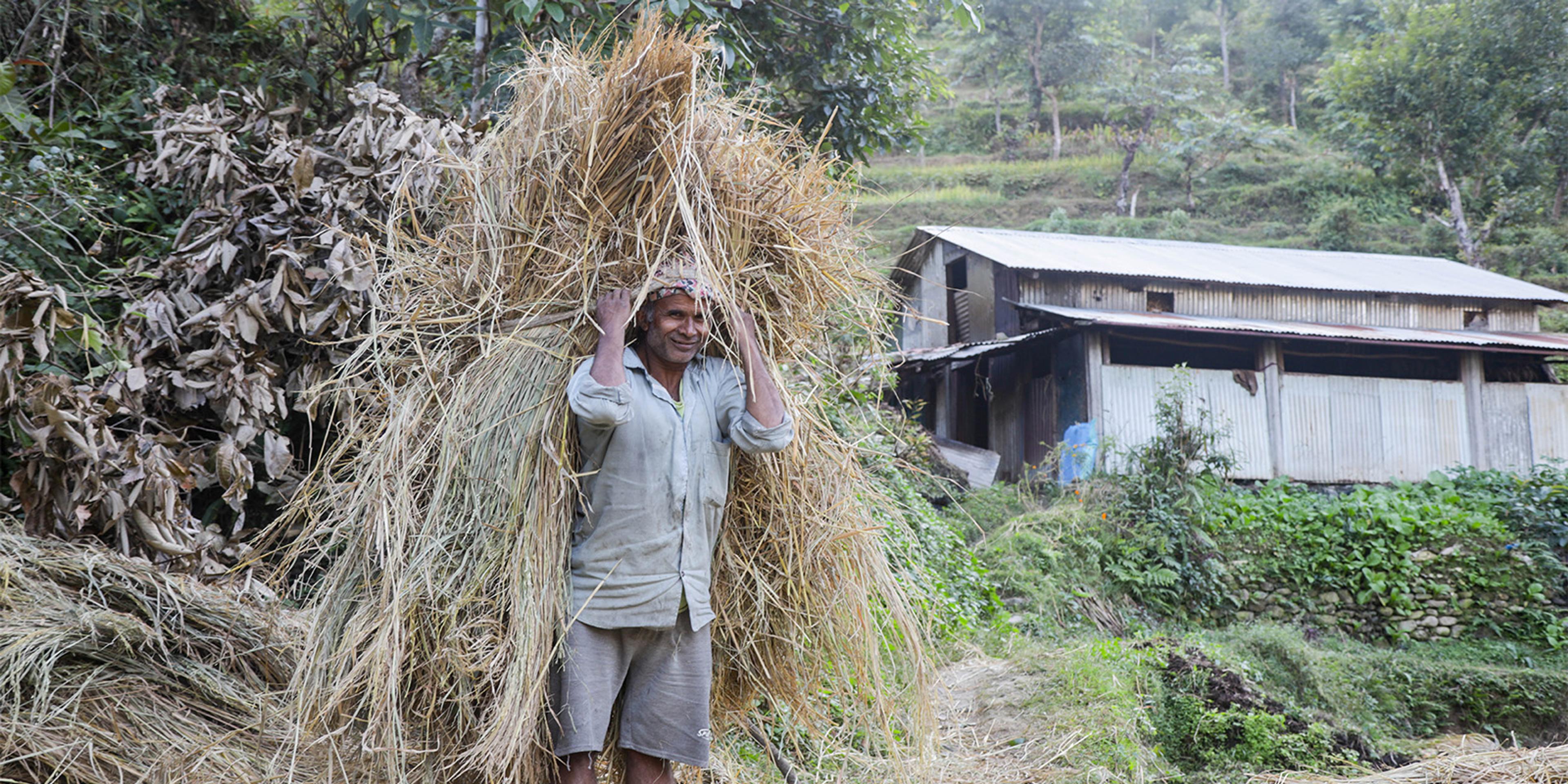
A man carries rice straw.
300 Years of Farming
The farmers have tended to this land for 300 years—passing down knowledge from generation to generation. It is a true agrarian system. They test techniques for efficacy and adapt to changes. They have a deep understanding of the natural systems on their farms and know how to work with nature in this place, rather than finding ways to beat nature to increase profits.
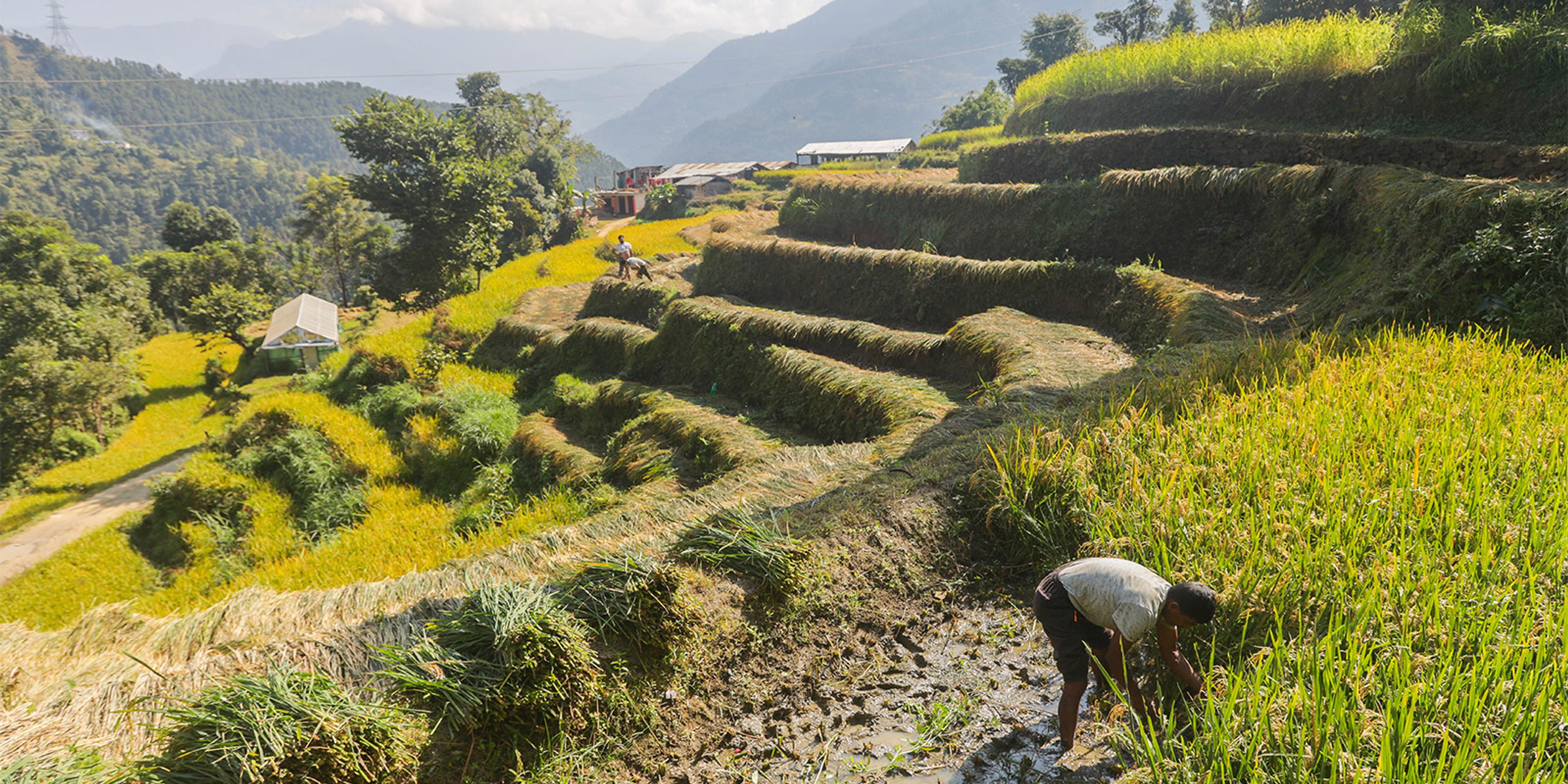
A man harvests rice.
The farms boasted fruit trees—banana trees loaded with fruit, pineapples growing in their shadows, and even coffee trees. There were vines of iskush (otherwise known as chayote) growing all over and we ate it for almost every dinner.
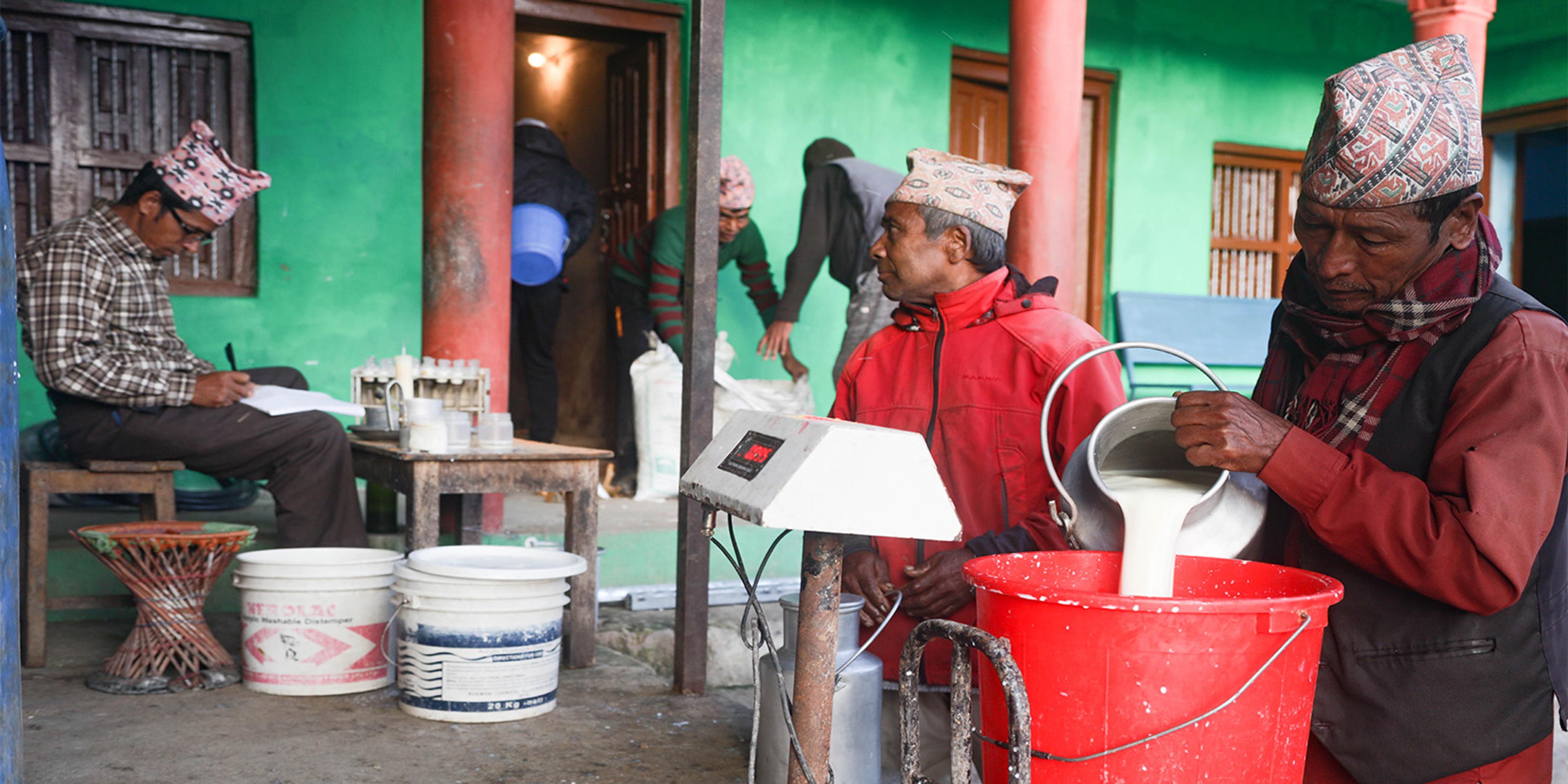
Farmers’ milk is tested for butterfat.
If Farmers Fail, Communities Fail
The sense of community is strong here. Each family relies on their own farm as well as that of their neighbor. Families take care of each other; if farms fail here, communities fail. It is impressive how the children take care of each other; the youngest were well tended to by the oldest. Older children leave for the city to attend college, but come home to help on the farm.
And, of course, amongst this agrarian fidelity, familial loyalty, and community devotion, there is time to play. We watched village elders ride their handmade Ferris wheel hooting with laughter. We played cricket and hacky sack with the children.
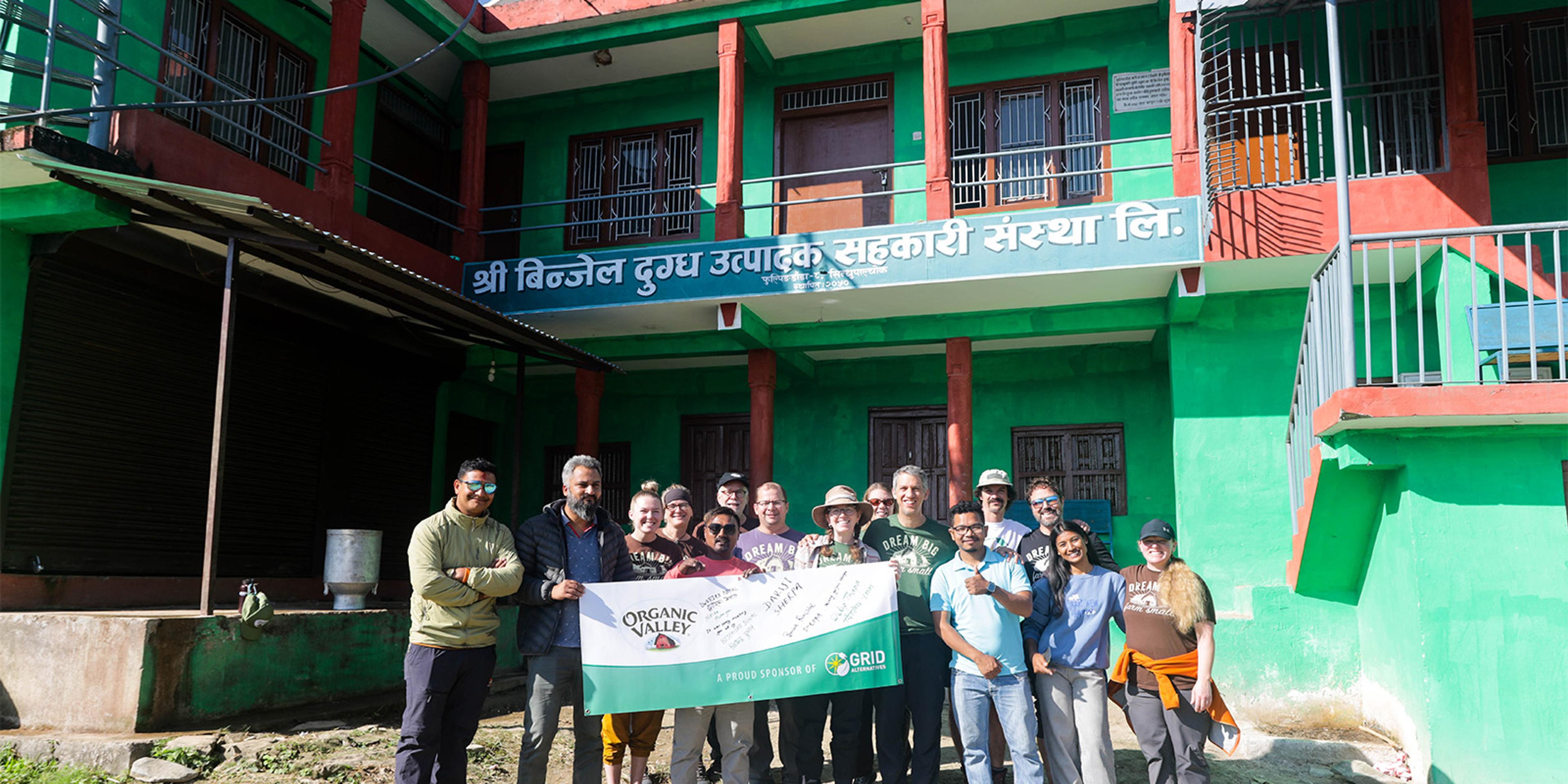
Volunteers and helpers take a break for a photo.
Saying Goodbye to Binjel
Hearts were heavy on our last day in Binjel. The last step of the install was to power them up, which required troubleshooting, followed by a lengthy software upgrade.
Visiting Nepal made me reflect on the advances we’ve made in our country to clean our air and water, ensure worker safety, safeguard our food, and what it means to be organic. Being in Binjel pushed me to consider what we gave up with these gains. Can we have these systems for improving the health and well-being of all citizens without sacrificing a sense of community living and good old-fashioned fun? I bring these thoughts back with me and let the questions guide how I work and make decisions for our cooperative.
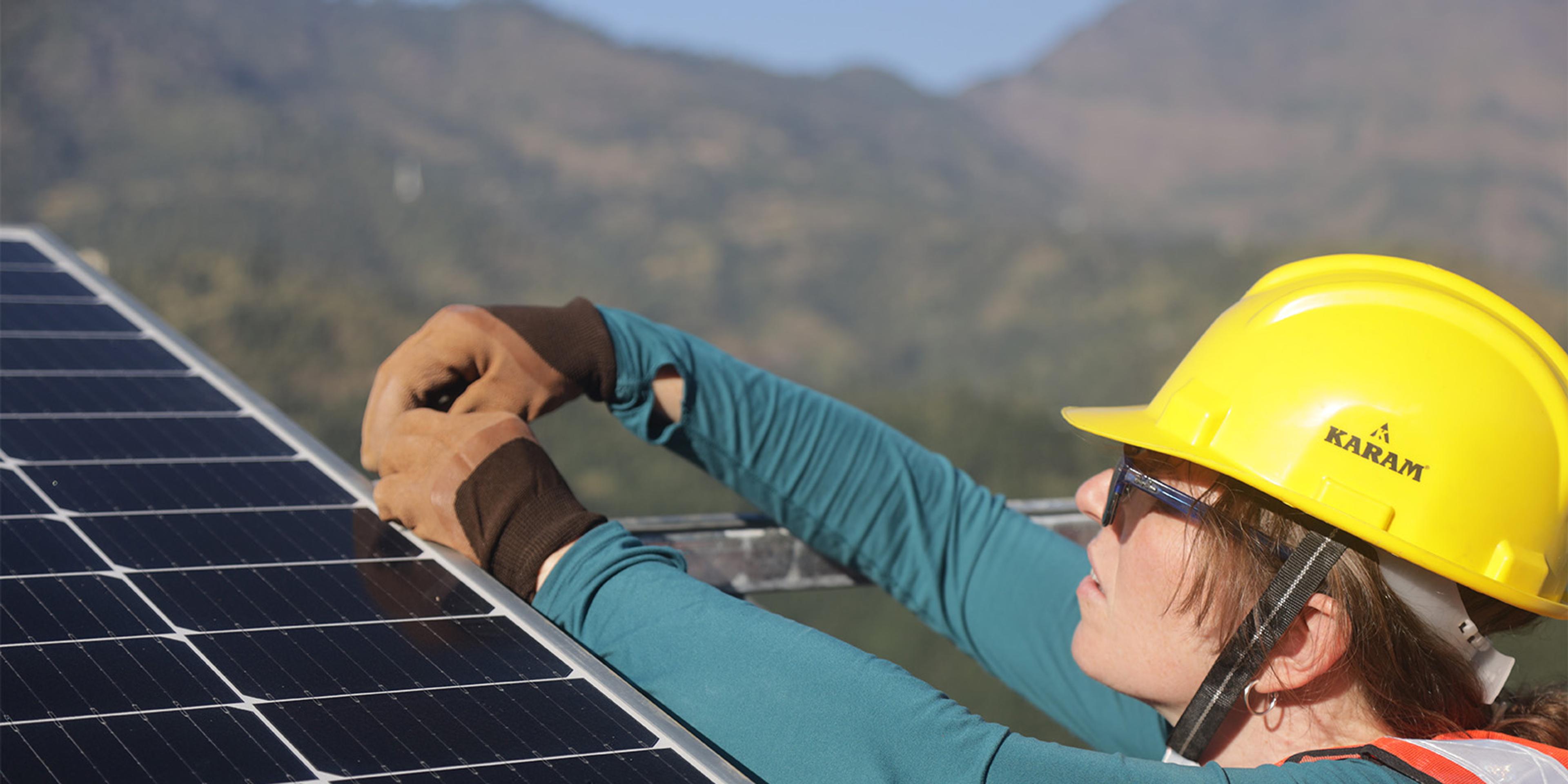
Maggie Becker installs solar panels.
Related Articles
Tags:
- cooperative businesses,
- giving back to communities,
- making an impact















